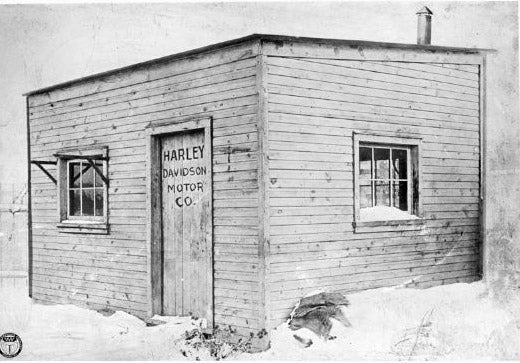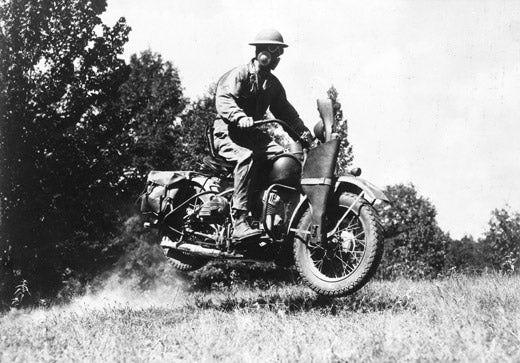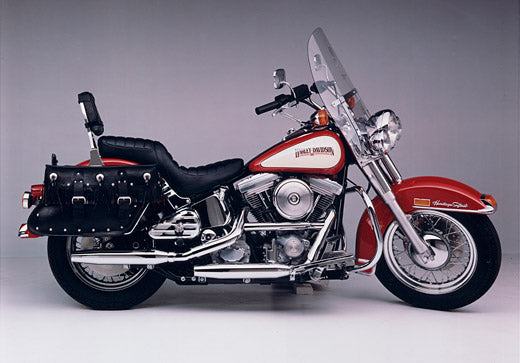If you’re reading this blog, chances are you either own a Harley or at least know something about Harley-Davidson Motorcycle Company. Either way, you’ll know a little more about Harley-Davidson in just a few more minutes.

Harley-Davidson got its start way back in 1903 in the city of Milwaukee. William S. Harley and Arthur Davidson produced a one-cylinder motorcycle that was both reliable and good looking. During the next five years, they built over 154 motorcycles in a little wooden barn.
In 1908, they had the makings of a company. This small company quickly expanded and William Davidson, Arthur’s brother, joined them. In a short time, the company grew to 20 employees and they had to build a new stone factory so they could expand to keep up with the growing demand for their motorcycles.

Just a few short years later in 1914, Harley-Davidson formally entered motorcycle racing. Did you know that the term “hog” came about due to the racing team’s mascot, a pig? It was always carried around the track in their victory laps.
By 1919, almost half of all motorcycles produced by Harley-Davidson were used by the U.S. Military in World War 1, giving them great credibility among our troops. By the time the U.S. Entered WWII, Harley-Davidson’s civilian motorcycle production is practically stopped in full in order for them to supply the high demand of military-spec motorcycles.

In 1943, Harley-Davidson wins it’s first of four Army-Navy “E” awards for excellence in wartime production. In 1952, the K-model was produced and just a few short years later Elvis Presley posed with one on the cover of the May Enthusiast in 1956. In 1965, the Electra-Glide, along with an all-new electric starter, is introduced, replacing the Duo-Glide. The Sportster line would also get this electric starter as an update soon after. In 1977, Harley Davidson introduced the FXS Low Rider with its special lower seat position, which was a hit.
The first part of the 1980s saw more changes, when Harley-Davidson decided to make changes to the transmission and engine. This was the Harley-Davidson gave birth to the FLT with its 5 speed transmission directly bolted to the engine, and the Kevlar belt replacing the drive-line.

In 1983, the 1340 cc v-twin engine was available in the Softail model, complete with its hidden rear shocks, completely changing the look of the motorcycle. By 1986, the Heritage Softail was introduced, giving it a bold new look. Just two short years later the FXSTS Springer Softail came to market. The Springer Softail had the classic 1940s look combined with a powerful 1340 cc engine that far exceeded the original 1940s bike. This symbolized a new era for Harley-Davidson.
The 1990s were a time of change again. The Fat was introduced and it was quick to catch on. The name Fat Boy is the combination of the names of two atomic weapons that were dropped on Japan. Their names were Fat Man and Little Boy. This motorcycle has become a collector’s item among all motorcycle enthusiasts.
Today, Harley-Davidson holds the majority of the U.S. market share on motorcycles over 850 cc. Like all fun toys, the Harley-Davidson has become a symbol of the up and coming people of today. If you own a Harley-Davidson, it says you have made it to the top. Like Porsche, BMW, or Mercedes-Benz, owning a Harley Davidson is a status symbol of making it…or so they say.
You’ll hear this bike long before you see it and when you see it; you’ll notice the sleek lines and overall appearance. This massive large noisy motorcycle is without a doubt not the easiest to handle. Neither is it he fastest bike on the road, it’s not meant to be, but it is one of most recognized and sought-after bikes to own.









Leave a comment
All comments are moderated before being published.
This site is protected by hCaptcha and the hCaptcha Privacy Policy and Terms of Service apply.